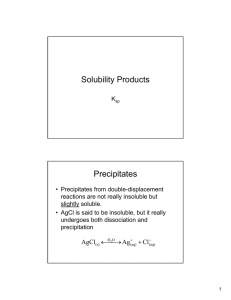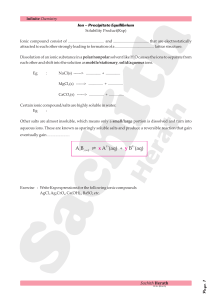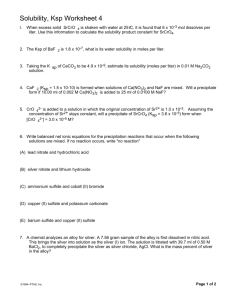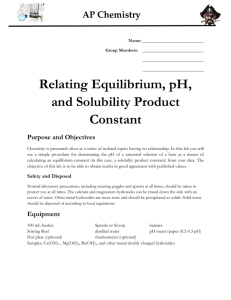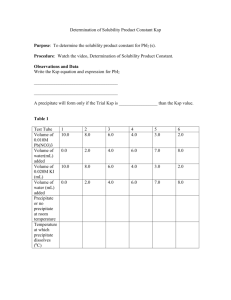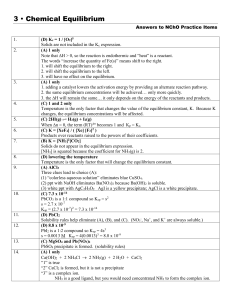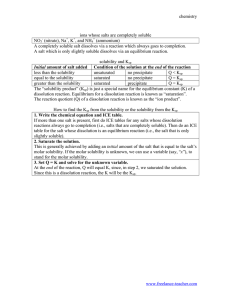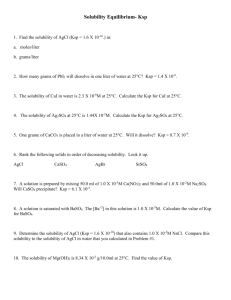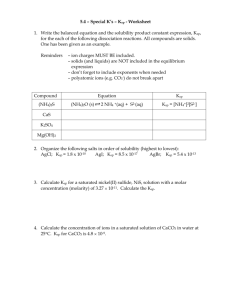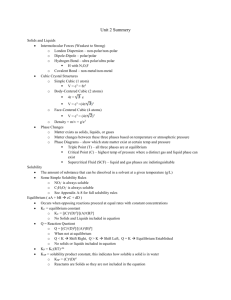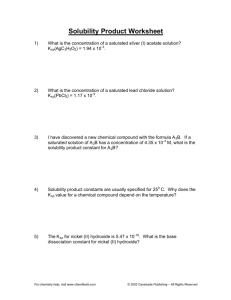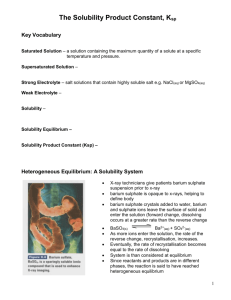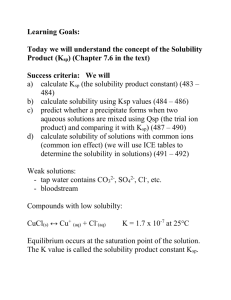Solubilty Equilibrium questions
advertisement
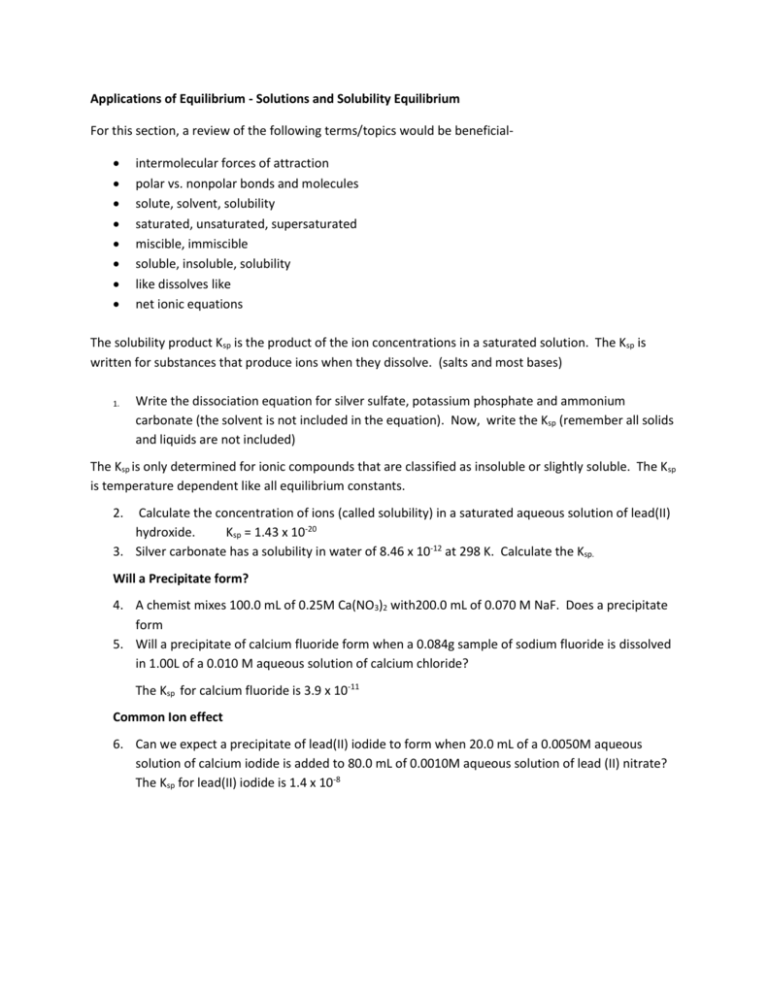
Applications of Equilibrium - Solutions and Solubility Equilibrium For this section, a review of the following terms/topics would be beneficial intermolecular forces of attraction polar vs. nonpolar bonds and molecules solute, solvent, solubility saturated, unsaturated, supersaturated miscible, immiscible soluble, insoluble, solubility like dissolves like net ionic equations The solubility product Ksp is the product of the ion concentrations in a saturated solution. The Ksp is written for substances that produce ions when they dissolve. (salts and most bases) 1. Write the dissociation equation for silver sulfate, potassium phosphate and ammonium carbonate (the solvent is not included in the equation). Now, write the Ksp (remember all solids and liquids are not included) The Ksp is only determined for ionic compounds that are classified as insoluble or slightly soluble. The Ksp is temperature dependent like all equilibrium constants. 2. Calculate the concentration of ions (called solubility) in a saturated aqueous solution of lead(II) hydroxide. Ksp = 1.43 x 10-20 3. Silver carbonate has a solubility in water of 8.46 x 10-12 at 298 K. Calculate the Ksp. Will a Precipitate form? 4. A chemist mixes 100.0 mL of 0.25M Ca(NO3)2 with200.0 mL of 0.070 M NaF. Does a precipitate form 5. Will a precipitate of calcium fluoride form when a 0.084g sample of sodium fluoride is dissolved in 1.00L of a 0.010 M aqueous solution of calcium chloride? The Ksp for calcium fluoride is 3.9 x 10-11 Common Ion effect 6. Can we expect a precipitate of lead(II) iodide to form when 20.0 mL of a 0.0050M aqueous solution of calcium iodide is added to 80.0 mL of 0.0010M aqueous solution of lead (II) nitrate? The Ksp for lead(II) iodide is 1.4 x 10-8

